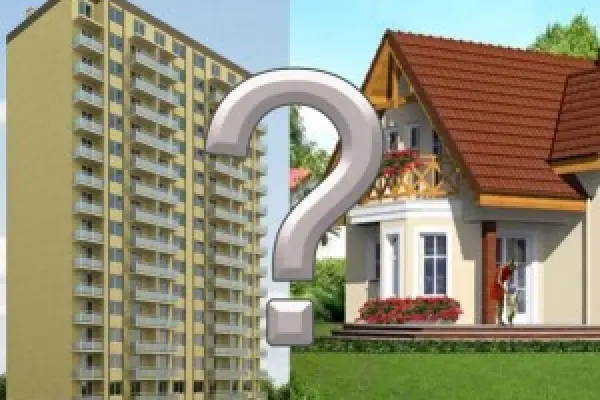The choice between buying an apartment in a new development and buying a private house is becoming an increasingly complex decision. According to international agency Knight Frank, demand for primary housing rose by 15% in 2025, while interest in suburban homes increased by 22%. By the way, this dynamic is related not only to changing priorities after the pandemic, but also to the development of remote work.
Last year I faced this dilemma personally when helping clients choose between an apartment in a new development and an individual house. The budget was $120,000. Buy an apartment in a new development or buy a private house? This question requires a comprehensive analysis of financial capabilities, lifestyle, and the family's long-term plans.
Financial Aspects: Comparing an Apartment and a House
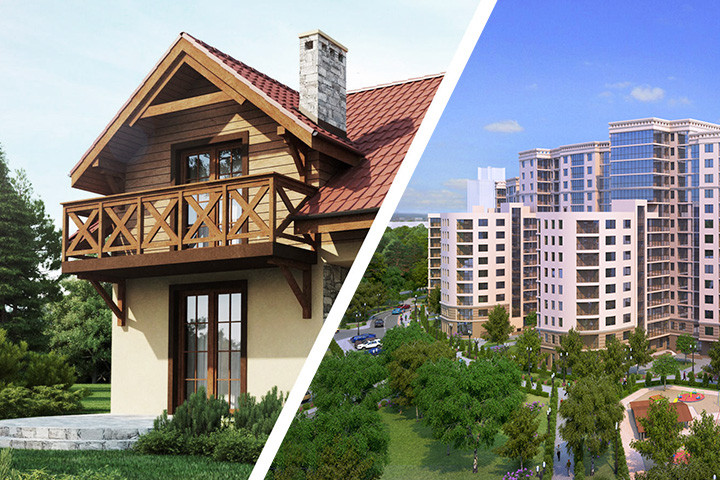 The cost of an apartment in a new development and the cost of a private house differ not only in purchase price. It's important to consider long-term costs of maintaining a cottage and living space. According to Deloitte Real Estate 2025 statistics, the total cost of ownership for suburban property is 35% higher than for housing of similar size in a multi-apartment building.
The cost of an apartment in a new development and the cost of a private house differ not only in purchase price. It's important to consider long-term costs of maintaining a cottage and living space. According to Deloitte Real Estate 2025 statistics, the total cost of ownership for suburban property is 35% higher than for housing of similar size in a multi-apartment building.
When purchasing primary housing, developers of new buildings often offer promotions from developers, interest-free installments for apartments, or discounts for one-time payment. Installments for house construction are less common, making the purchase more complex financially.
A detailed comparison of costs will help understand the real picture of expenses for different types of real estate:
| Expense Item | Housing in New Development | Individual House |
|---|---|---|
| Average price per m² | $1,200-1,800 | $800-1,400 |
| Utilities/month | $150-250 | $300-500 |
| Property tax/year | $300-600 | $800-1,500 |
| Territory maintenance/year | $0 (included in utilities) | $1,000-3,000 |
| Insurance/year | $200-400 | $600-1,200 |
These data show that initial savings when buying a suburban house can result in significant expenses in the long term.
Regional Specifics: Where It's More Profitable to Live
The choice between living space in new housing and a mansion strongly depends on the region. In metropolitan regions, apartments in residential complexes cost 30-40% more than in regions, but have better liquidity. Suburban real estate in the suburbs of major cities has risen in price by 20% over the past year due to demand for autonomous housing.
In modern realities, buyers increasingly pay attention to housing safety. Apartments on lower floors became 15% more popular, and cottages with autonomous life support systems grew in price by 25%. The infrastructure of the residential complex plays a critical role in choosing living space, especially the presence of shelters and backup power systems.
Advantages of an Apartment in a New Development: Modern Comfort
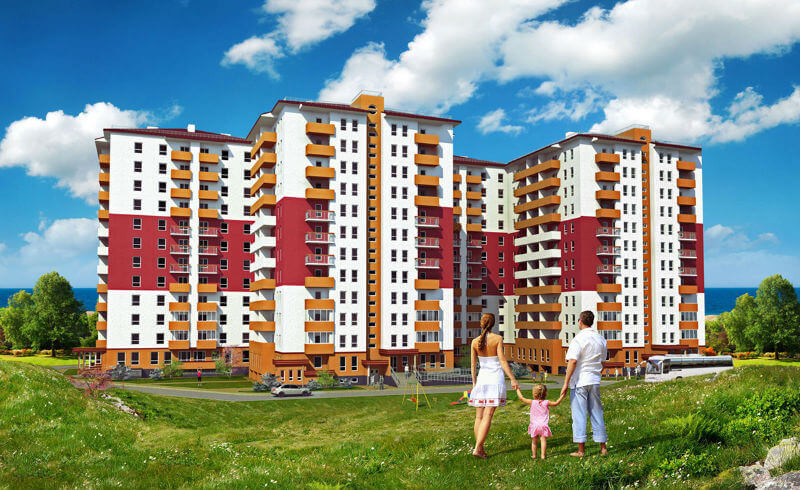 Modern residential complexes offer a level of comfort that is difficult to achieve in a private house. Infrastructure of new developments includes children's playgrounds, fitness centers, underground parking in new buildings. In my experience, developed infrastructure becomes the decisive factor for 65% of buyers when choosing primary housing.
Modern residential complexes offer a level of comfort that is difficult to achieve in a private house. Infrastructure of new developments includes children's playgrounds, fitness centers, underground parking in new buildings. In my experience, developed infrastructure becomes the decisive factor for 65% of buyers when choosing primary housing.
«Our residential complex has everything needed: a kindergarten on the territory, a supermarket on the first floor, a fitness room. In two years of living, we never regretted our choice», – shares Marina Kovalenko, resident of new housing in Kiev.
Advantages of an apartment in a new development also include minimal time costs for maintenance. The management company takes care of all concerns about the adjacent territory. Free apartment layout allows adapting the space to your needs. Research by Statistics Canada shows that owners of suburban real estate spend on average 15 hours per week more on housing maintenance.
Advantages of a Private House: Freedom and Space
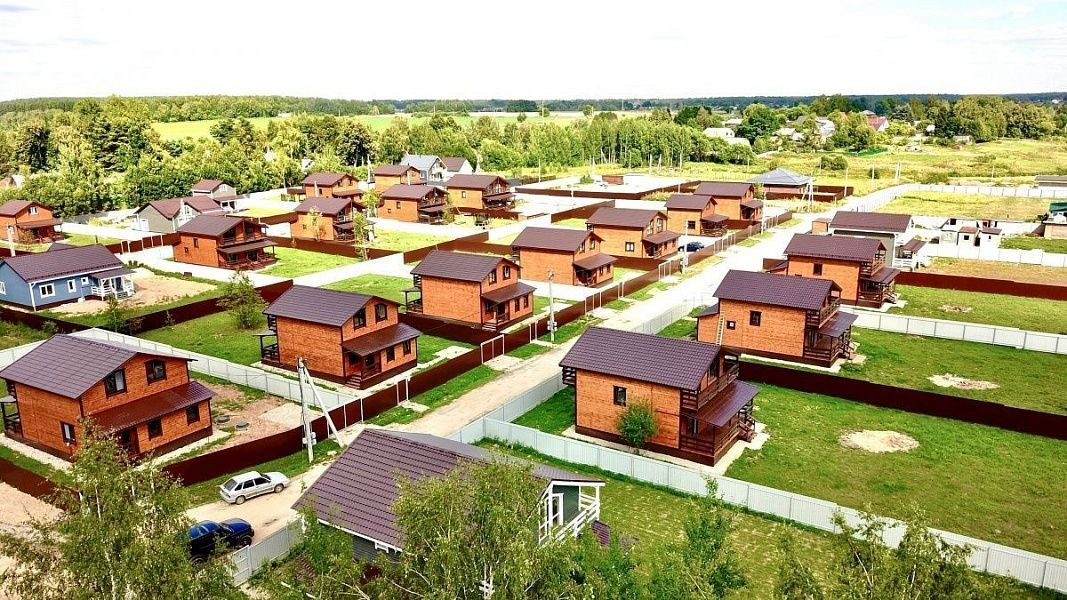 Life in an individual house attracts those who value privacy and space. Your own plot – is an opportunity to create a garden and vegetable garden in a private house, organize a barbecue area, build a pool. Honestly, for families with children this often becomes the determining factor when buying a private house.
Life in an individual house attracts those who value privacy and space. Your own plot – is an opportunity to create a garden and vegetable garden in a private house, organize a barbecue area, build a pool. Honestly, for families with children this often becomes the determining factor when buying a private house.
Autonomous heating in a cottage allows you to independently regulate temperature and not depend on centralized systems. In 2025 conditions, when house energy efficiency comes to the fore, modern technologies allow reducing heating costs by 30-40%. Landscape design of the plot creates a unique atmosphere, inaccessible in multi-apartment buildings.
Alternative Options: Townhouses and Duplexes
Townhouses represent a compromise between living space in new housing and a mansion. They combine the advantages of both types of real estate: own plot for building a small recreation area and entrance, but at the same time shared infrastructure and lower maintenance costs. The cost of a townhouse is usually 20-30% lower than a separate cottage of similar area.
Duplexes – another option popular among young families. This is a mansion for two families with separate entrances. Such a solution allows dividing costs for territory maintenance and communications with neighbors, which reduces overall ownership cost by 25-35%.
Technologies in Modern Housing: Renovation in New Development and House Construction
Modern technologies radically change the idea of comfortable housing. Smart apartments in residential complexes are equipped with smart home systems, allowing control of lighting, climate and security via smartphone. Apartment finishing using modern materials provides excellent sound insulation and energy efficiency.
Modular houses are becoming a new trend in private homebuilding. They allow starting with a basic structure and gradually expanding living space. The cost of building a modular mansion is 15-20% lower than traditional, and construction time is reduced to 3-4 months. How much time does house construction take in the traditional way? Usually 12-18 months.
Legal Aspects: Documents and Checks
Buying an apartment in a new development requires checking the following documents: shared participation agreement (SPA), building permit, project declaration. For a private house you need: property rights for the plot, technical passport, commissioning certificate. Which documents are needed to buy an apartment additionally? It's important to check for encumbrances and debts.
Developer verification includes studying the court case registry, license availability, history of completed projects. How to check a developer correctly? Use official registries, buyer reviews, data on completed projects. Which documents are needed to buy a house with a plot? Besides the basic ones, you'll need a cadastral passport of the land and building permit.
How to register ownership of an apartment or house? After signing the contract, registration in the State Register is necessary. The procedure takes 7-14 days. Which taxes when buying an apartment or house will you have to pay? The main one – property tax, which depends on cadastral value.
Typical Mistakes When Choosing Housing
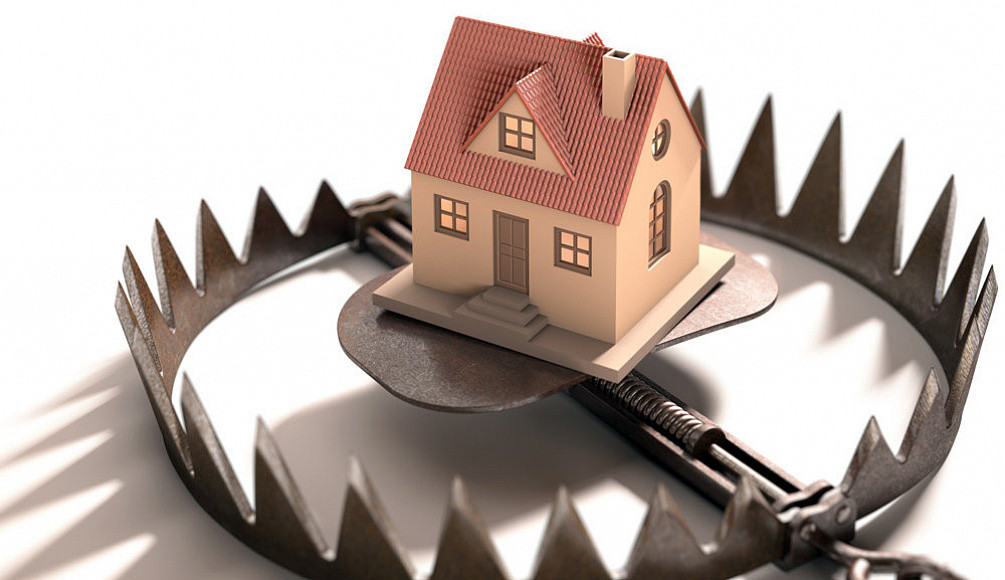 Main mistakes buyers make when choosing between primary housing and suburban real estate:
Main mistakes buyers make when choosing between primary housing and suburban real estate:
- Underestimating costs of maintaining a mansion – many forget about expenses for snow removal, garden care, roof repair
- Ignoring transport accessibility – a beautiful cottage 50 km from the city can turn into a daily nightmare
- Buying living space without checking the management company – poor service can ruin life in the best residential complex
- Choosing too large housing – overpayment for extra square meters and high heating costs
- Lack of reserve for unforeseen expenses – always allocate 10-15% of real estate cost for additional expenses
- Buying without considering rough finishing – what is rough finishing? This is housing without finish work, requiring additional investments of $200-400 per m²
Impact of Choice on Quality of Life
The choice between living space in a multi-apartment building and a mansion significantly affects the family's lifestyle. Life in new housing means proximity to urban infrastructure, cultural events, educational institutions. Silence outside the city and fresh air – advantages of suburban real estate, especially for families with small children.
Privacy in a private house creates conditions for a more measured life, closeness to nature. Studies show that children growing up in cottages with plots suffer less from allergies. Neighbors in a new development can be both a plus (safety, communication) and a minus (noise, conflicts).
Real Estate Market 2025: Trends and Prospects
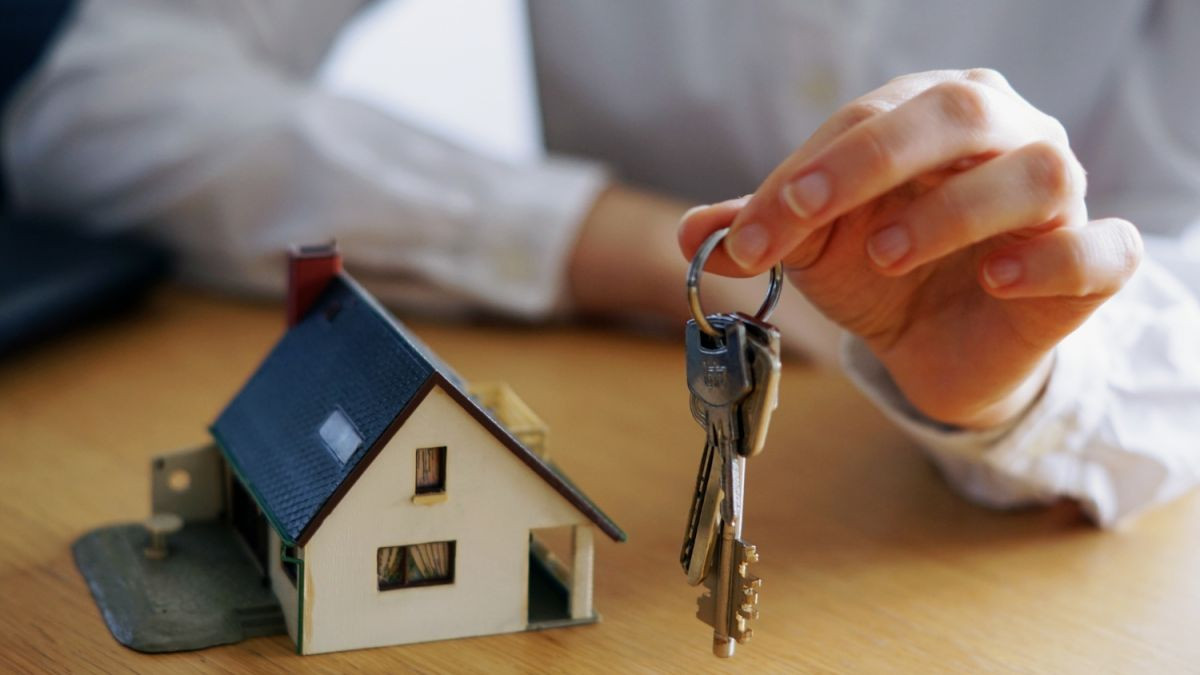 The new development market 2025 demonstrates growth of smart technologies. Private homebuilding trends include modular houses and energy-efficient solutions. According to the PwC Emerging Trends in Real Estate 2025 report, creativity and adaptability become key success factors.
The new development market 2025 demonstrates growth of smart technologies. Private homebuilding trends include modular houses and energy-efficient solutions. According to the PwC Emerging Trends in Real Estate 2025 report, creativity and adaptability become key success factors.
Suburban real estate in 2025 – is no longer just a dacha, but full-fledged housing with urban level of comfort. Real estate agencies note growing interest in ecological projects both in the segment of new developments and private houses.
Step-by-Step Housing Selection Plan
To correctly buy an apartment in a new development or buy a private house, follow this plan:
- Determine the budget – calculate not only the purchase cost, but also maintenance expenses for 5 years
- Evaluate lifestyle – consider work schedule, presence of children, hobbies, need for personal transport
- Study location – check transport accessibility, presence of schools near the house, shops nearby
- Check documents – thoroughly study the legal cleanliness of the object, reputation of developer or seller
- Calculate full ownership cost – include taxes, utility payments, maintenance, insurance
- Visit the object several times – at different times of day and on different days of the week
- Consult with experts – lawyer, appraiser, experienced realtor from a real estate agency
Checklist for Decision Making
Use this checklist to systematize the choice between living space in new housing and a mansion:
Financial factors:
- ☐ Budget calculated for purchase
- ☐ Monthly maintenance costs assessed
- ☐ Taxes and insurance considered
- ☐ Reserve for unforeseen expenses available (10-15%)
- ☐ Mortgage conditions analyzed
- ☐ Developer promotions and installments studied
Practical aspects:
- ☐ Transport accessibility assessed
- ☐ District infrastructure checked
- ☐ Needs of all family members considered
- ☐ Optimal area determined
- ☐ Future plans considered (5-10 years)
- ☐ Apartment or house layout studied
Legal verification:
- ☐ All documents checked
- ☐ Developer/seller reputation studied
- ☐ Consulted with lawyer
- ☐ Registration possibility verified
- ☐ Escrow account conditions clarified
Quality of life:
- ☐ Noise level and sound insulation assessed
- ☐ Environmental situation checked
- ☐ Social needs considered
- ☐ Lifestyle priorities determined
- ☐ Parking necessity considered
Conclusion: Conscious Choice Between Apartment and House
House or apartment: pros and cons of each option need to be evaluated individually. Buying an apartment in a new development suits those who value urban comfort and minimum worries. Buying a private house – choice for lovers of space and autonomy.
Apartment or house: what to choose in a specific situation depends on many factors. Young families often start with living space in new housing, gradually accumulating funds for a mansion. Elderly people may move from suburban houses to apartments for convenience of maintenance.
Remember that ideal housing – is what corresponds to your lifestyle, financial capabilities and future plans. New development or private house – each option has its advantages. Don't rush the decision, carefully weigh all arguments and seek consultation from trusted real estate agencies.
